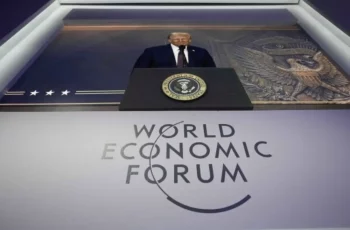
Introduction
Over the past few years, the strategic landscape of Eurasia has undergone a quiet but consequential shift. Iran and Russia—two countries long encumbered by Western sanctions, geopolitical isolation, and ideological marginalization—have moved decisively toward a comprehensive partnership that transcends transactional convenience. From energy deals and defense cooperation to financial integration and shared infrastructure, the Iran–Russia axis is evolving into a cornerstone of what both nations herald as a “multipolar” global order.
This realignment is not merely reactive; it is deeply rooted in a shared worldview that challenges the foundational assumptions of U.S.-led global hegemony. At its core, the Tehran–Moscow partnership represents an attempt to reorder international relations on the basis of sovereignty, regionalism, and strategic pluralism. The significance of this pivot lies not only in its bilateral implications but in its symbolic resonance for a growing cohort of states seeking alternatives to the Western-centric order.
Shared Adversity, Shared Strategy
The foremost driver of Iran–Russia convergence is their mutual experience under Western sanctions. Russia, especially after its 2022 intervention in Ukraine, has become the world’s most sanctioned state, a status Iran has long held. Both see sanctions not as tools of law, but as instruments of geopolitical coercion. In this light, their cooperation emerges from a survivalist logic—building parallel financial systems, alternative trade routes, and sovereign defense capacities insulated from Western disruption.
In 2024, over 96% of Iran–Russia bilateral trade was settled in local currencies—rials and rubles—signaling a decisive departure from dollar dependence. Their financial systems have been directly linked, bypassing SWIFT and enabling seamless cross-border transactions. Such developments are more than logistical workarounds; they are the blueprints of a post-dollar order.
Infrastructure of Multipolarity
One of the most tangible manifestations of this axis is the joint development of the International North–South Transport Corridor (INSTC), a trade route that bypasses the Suez Canal and connects India, Iran, Russia, and eventually Europe. The $1.6 billion Rasht–Astara railway, now under construction, is a key segment of this corridor. This initiative not only enhances regional connectivity but also rewires global trade logistics to reduce reliance on Western-dominated chokepoints.
Equally notable is Russia’s investment in Iran’s energy sector. The $40 billion Gazprom–NIOC memorandum envisions shared development of Iranian gas fields, oil production, and LNG infrastructure. This energy cooperation aligns with Moscow and Tehran’s mutual interest in undermining Western energy monopolies and recalibrating supply lines toward the East.
Importantly, in Iran, strategic actors beyond the executive branch have also contributed to sustaining this trajectory. Under the leadership of Speaker Mohammad Baqer Qalibaf, the Iranian Parliament (Majles) has taken proactive steps to deepen legislative diplomacy with Russia. Parliamentary committees have advanced discussions with the State Duma on cross-border transit, energy coordination, and financial integration—providing institutional continuity and political endorsement for long-term bilateral frameworks.
Security Cooperation Without a Formal Alliance
In the military domain, Iran has emerged as a critical supplier of drones to Russia during the Ukraine conflict, reversing traditional arms flow patterns. Joint production of UAVs on Russian territory and discussions about advanced fighter jet sales illustrate how both nations are transcending past mistrust. Yet, their strategic cooperation avoids entanglement in mutual defense obligations—no Article 5 equivalent exists between them.
Instead, they have embraced what could be called “asymmetric strategic alignment”: intelligence sharing, joint exercises, and coordinated messaging in regional theaters like Syria and the South Caucasus. This loose security partnership is flexible, allowing each party to retain autonomy while enhancing deterrence against common adversaries.
A New Geopolitical Grammar
Iran and Russia have also embedded their partnership within broader Eurasian institutions. Tehran’s full accession to the Shanghai Cooperation Organization (SCO) and BRICS—both with Moscow’s backing—underscores their shared commitment to multilateral platforms that operate outside the normative framework of the West. These institutions offer diplomatic ballast and economic alternatives to Western-dominated global governance bodies.
Moreover, both countries articulate a coherent ideological narrative that frames Western interventionism as hypocritical and destabilizing. In their view, liberal democratic norms often serve as pretexts for regime change and neocolonial influence. Their counter-narrative emphasizes cultural sovereignty, non-intervention, and regional dialogue—a lexicon increasingly attractive to many in the Global South.
Challenges to Durability
Yet, this strategic alignment is not without friction. Iran and Russia remain competitors in global energy markets and may diverge in regional priorities, especially if geopolitical conditions change. The asymmetry in their power profiles—Russia as a global actor, Iran as a regional one—could lead to strategic recalibration.
Nonetheless, the institutionalization of their partnership—formal treaties, interlinked banking systems, military dialogues, and multilateral coordination—suggests a level of permanence that transcends past oscillations. As long as the United States maintains a confrontational stance toward both countries, their incentives to deepen cooperation will remain intact.
Conclusion: A Catalyst for a New Order
What we are witnessing is not merely the strengthening of a bilateral relationship, but the crystallization of a broader challenge to the unipolar moment. The Iran–Russia entente may not dismantle the Western order, but it offers a viable alternative for states seeking strategic autonomy and multipolar equilibrium. It is a prototype for how non-Western actors can build resilience, pursue self-defined development, and defy economic and political coercion.
For policymakers in the West, the implications are profound. Ignoring this realignment risks underestimating the centrifugal forces reshaping global governance. The Iran–Russia partnership is both a symptom and a driver of a world in transition—a world in which power, values, and institutions are no longer the exclusive domain of the Atlantic alliance.
As the geopolitical pendulum swings eastward, Tehran and Moscow are not merely reacting to Western pressure—they are rewriting the rules of engagement in a post-Western era.










Comments